Flowers lift spirits, decorate gardens, grow wildly, and inspire poets and painters alike. There’s meaning in their colors and types and their petals and scents vary across different species. There are some with dark-colored tones and others with bright, bold colors that immediately capture attention. There are also flowers that don’t take center stage and often go unnoticed. They may be delicate as lace throughout a thoughtfully made bouquet or they may add a misty effect to blooming gardens. Below, we invite you to discover the six smallest flowers in the world.
The 6 Smallest Flowers in the World
1. Watermeal
Scientific Name: Wolffia
Native to: North America, including Canada, the contiguous U.S., and Puerto Rico
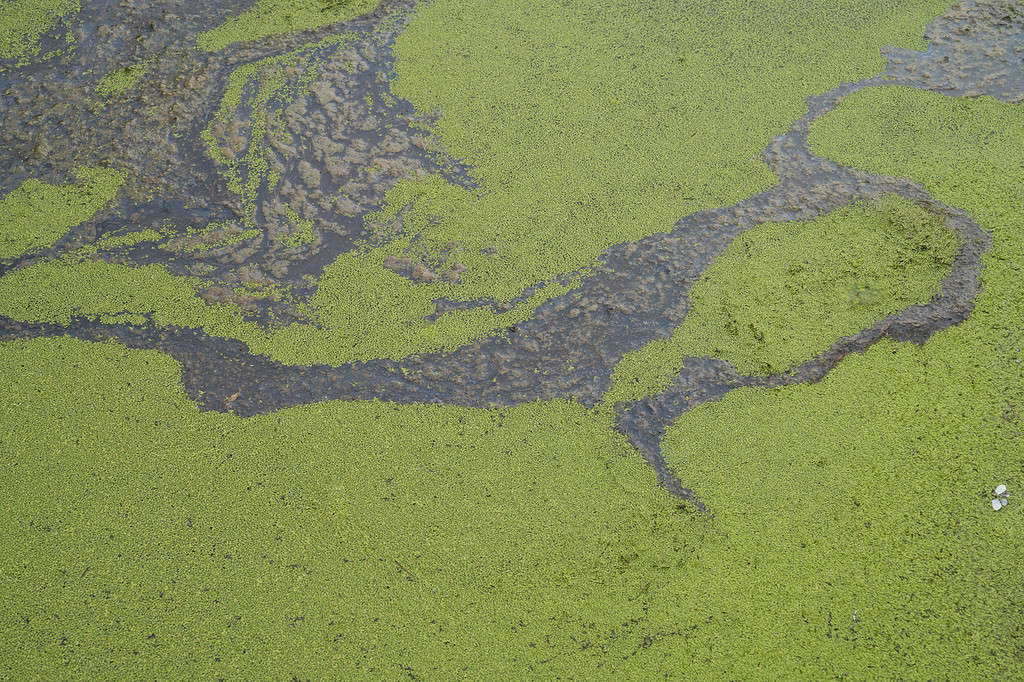
©iStock.com/sueuy song
Watermeal is an aquatic plant that takes the number one spot for the smallest flower found throughout the world. These flowers have no roots and call bodies of water home. Usually, they huddle together in bright greens and yellows and float over a large surface of the water, absorbing nearly all the oxygen available. These flowers are a part of the Lemnaceae family. If you’ve ever asked for sprinkles on your cupcake or your ice cream cone, you know how tiny a single sprinkle is. That’s about the size of a single watermeal flower! To imagine how light it is, it only weighs the same as two grains of salt.
2. Kenilworth Ivy
Scientific Name: Cymbalaria muralis
Native to: Southern Europe
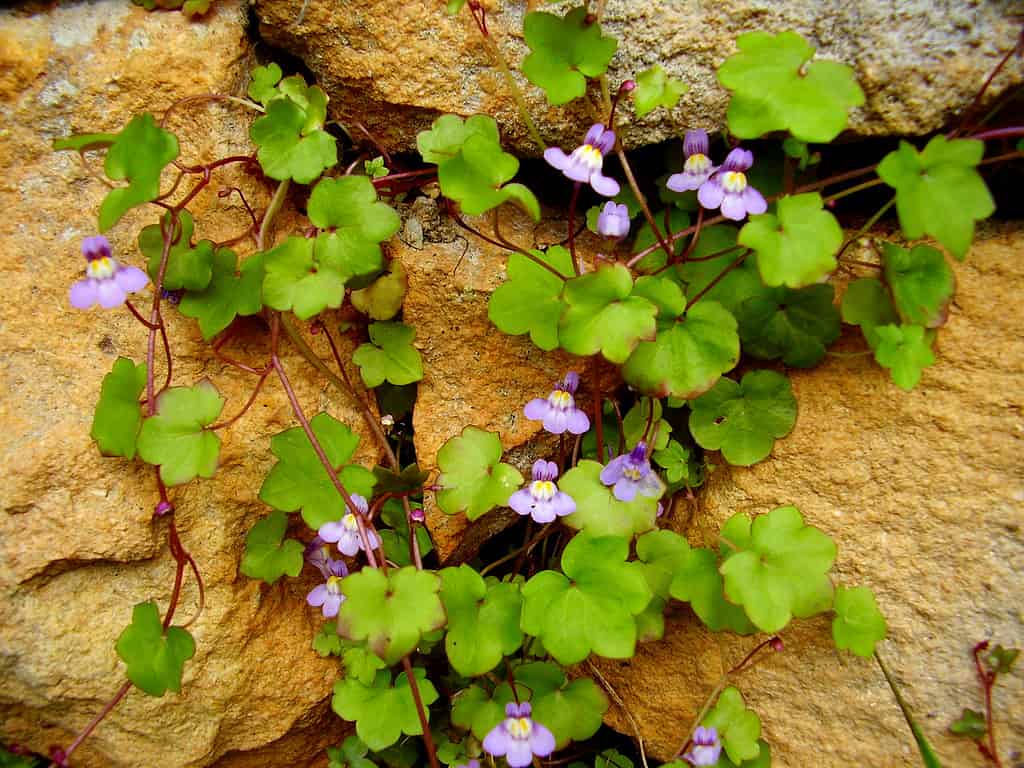
©iStock.com/PlazacCameraman
Kenilworth ivy is a part of the Plantaginaceae family. This flowering vine thrives in moisture-filled environments where the weather is cool (it’s even frost tolerant!). It reaches up to five centimeters tall and the flowers are lilac, appearing almost like tiny snapdragons. These bloom at the start of the summer season in May through September. Bees may pollinate Kenilworth ivy, but this plant is unique in that it is also self-fertile. The flowering vines grow in multiple places, including gardens, roadsides, and where there are gaps between moist walls. They look great as a ground cover and may also add a delicate, charming touch to a hanging basket.
3. Forget-Me-Not
Scientific Name: Myosotis
Native to: Eurasia, New Zealand, North America and South America, and Papua New Guinea
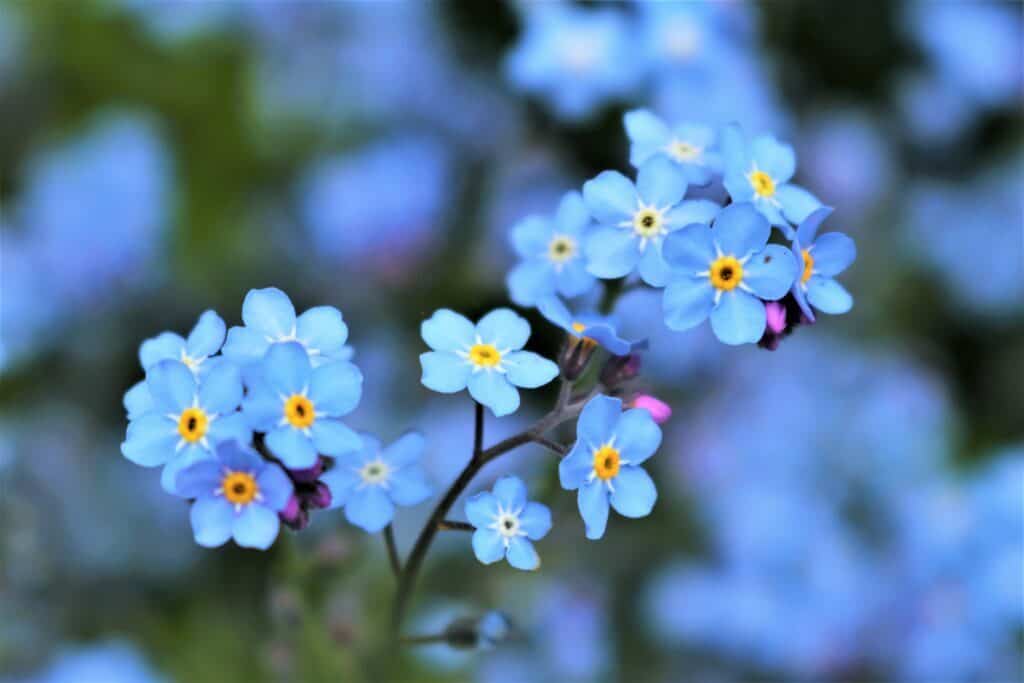
©iStock.com/Agnieszka Klimaszewska
Forget-me-not flower petals similarly resemble the shape of a mouse’s ears. This is an herbaceous plant that is a part of the Boraginaceae family and that can grow up to a foot tall. Different varieties produce different colored flowers, including blue, white, pink, and yellow. They cluster together but remain flat and open. They have yellow centers that are only about one centimeter in diameter. The pods of these flowers look like tulips and contain seeds. These small flowers attract several pollinators, including butterflies and bees. During the day, there’s no particularly alluring fragrance to the flowers but with nightfall, it’s as if they take out their favorite perfume and start emitting an enjoyable scent.
4. Baby’s Breath
Scientific Name: Gypsophila
Native to: Eurasia, Australia, Africa, and the Pacific Islands
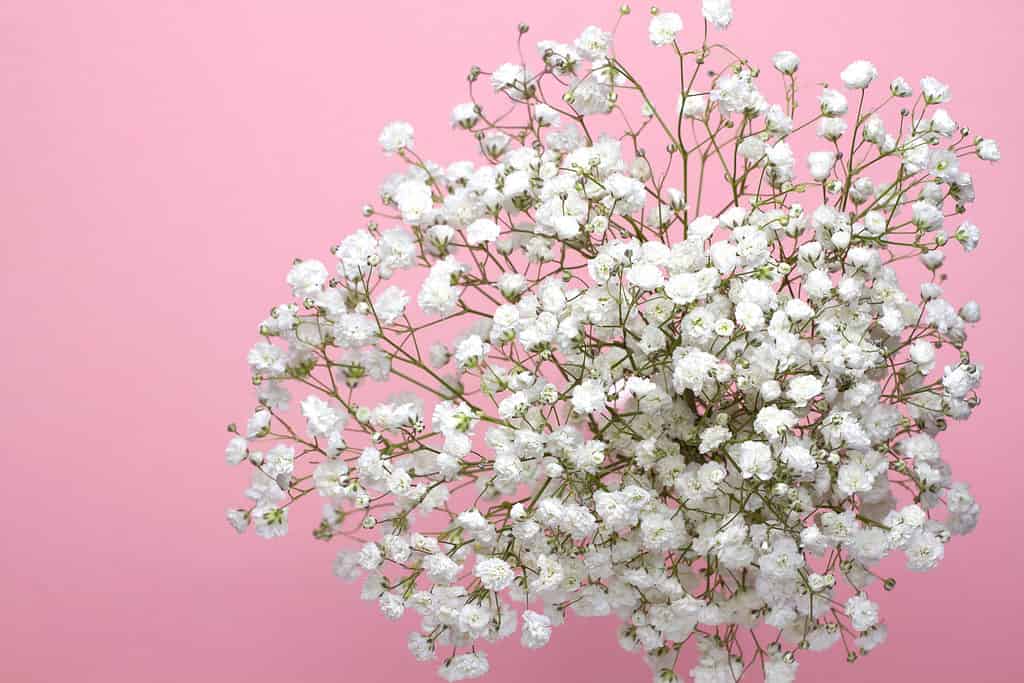
©outlander1746/Shutterstock.com
Baby’s breath flowers grow grouped together on tall stems. They belong to the Caryophyllaceae family, and the flowers are typically pink or white, extending to five petals per flower. These flowers gracefully decorate gardens and bouquets, serving to add an ethereal appeal to existing arrangements. They bloom during the spring and summer seasons and tolerate full and partial sun well. They require light, fertile soil with good drainage. If it’s dry, they need plenty of moisture to thrive. They make it up to 20 inches tall and the leaves are a complementary bluish-green color.
5. Black Swallow-Wort
Scientific Name: Cynanchum louiseae
Native to: Europe
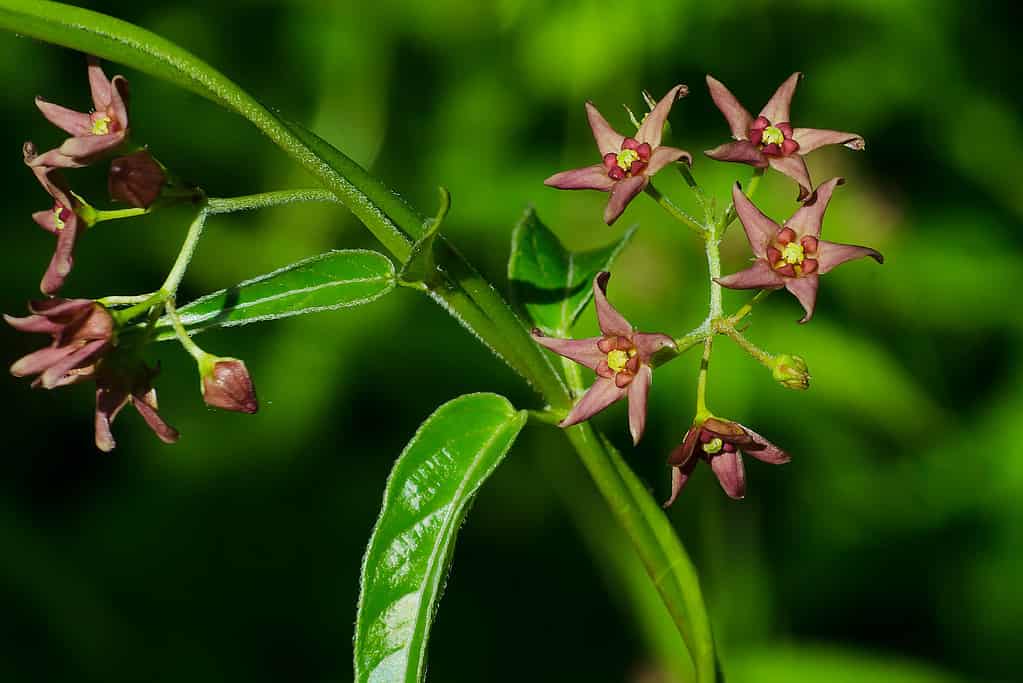
©Paul Reeves Photography/Shutterstock.com
Although many flowers that bloom are light-colored and bold-colored, black swallow-wort is a bit different. The petals on these flowers are dark purple, appearing almost black, and have fine white hairs on them. They require plenty of sunlight to flourish into the star shapes that distinguish them. The flowers themselves measure about ¼ inch wide and they sit atop winding green stems. These flowers are a part of the Apocynaceae family and can typically be found naturally growing in old fields and woodlands. They bloom in the middle and later part of summer during the months of June and July.
6. Black Medick
Scientific Name: Medicago lupulina
Native to: Europe, North Africa, India, China, and Korea
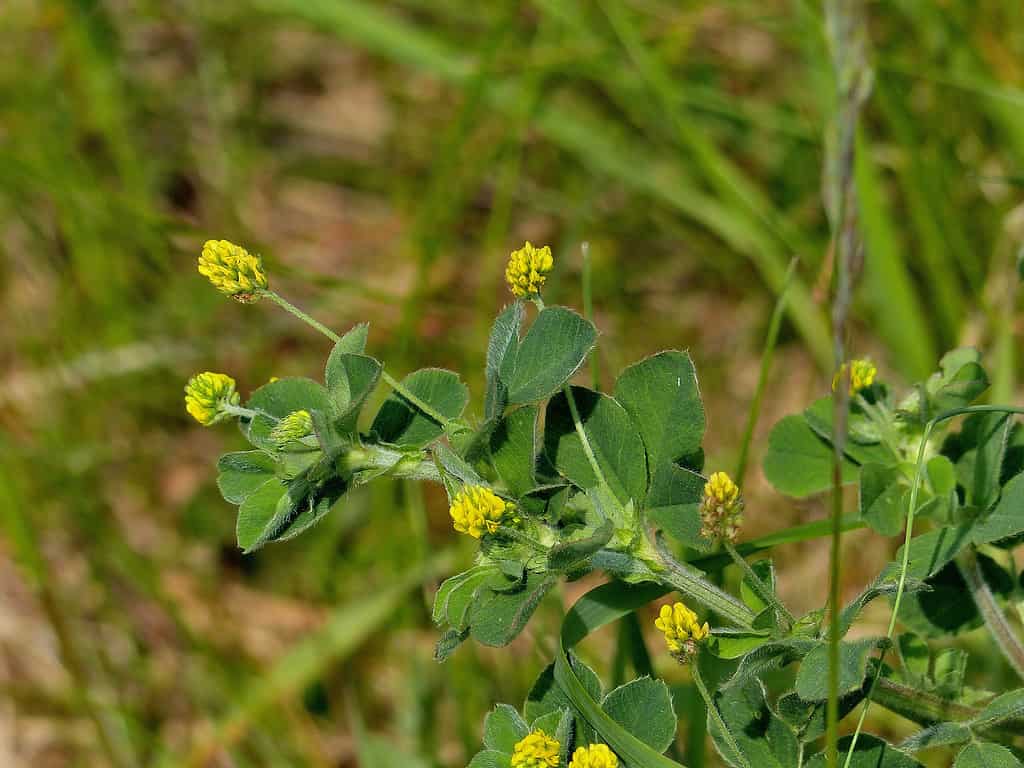
©Tom Curtis/Shutterstock.com
These flowers, though small, use their strength in numbers to make a bold statement. They’re a part of the Leguminosae family and bunch together into groups of up to 50 flowers that can measure up to ¼ of an inch across. They are bright yellow and can grow up to a foot and a half tall. Their stems may be either reddish-green or light green and littered with fine white hairs. They often bloom around pastures, roadsides, and prairies. They prefer full sun and start to bloom during the spring season in April all the way through the start of fall in September.
The post Discover the 6 Smallest Flowers in the World appeared first on AZ Animals.
from Animal News, Facts, Rankings, and More! - AZ Animals https://ift.tt/l4yXOgt